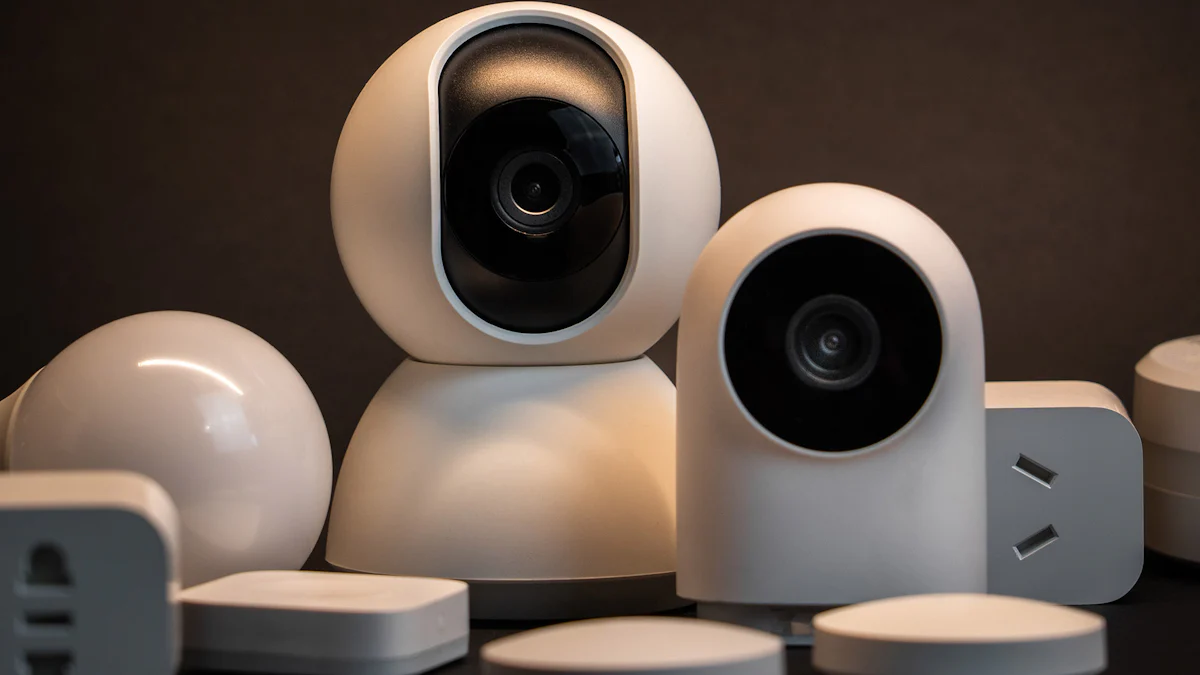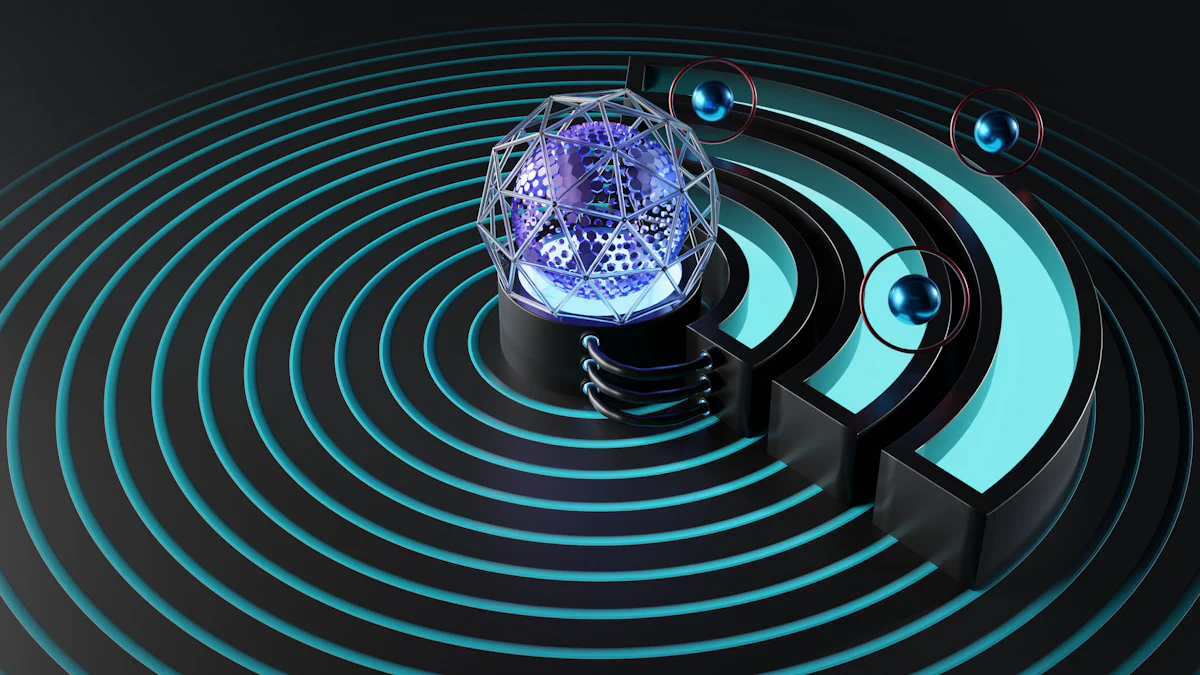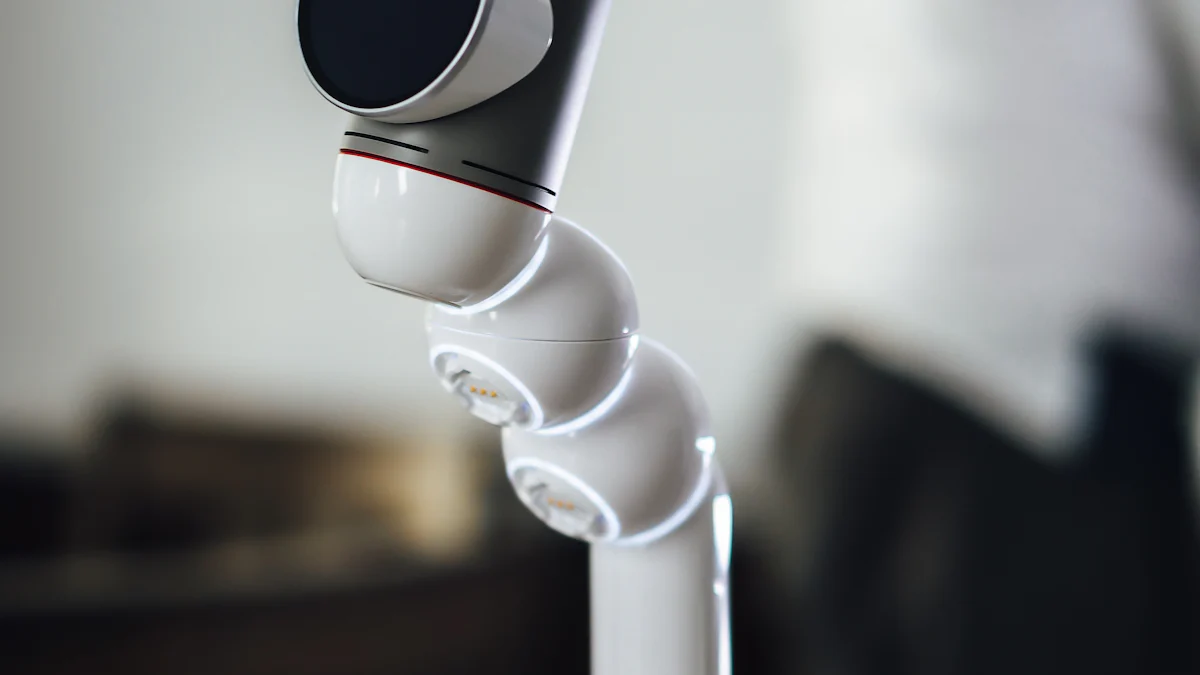Exploring the Future Trends in IoT for 2025

The Internet of Things (IoT) is set for extraordinary expansion by 2025, with forecasts predicting over 27 billion IoT devices online. This increase signifies a compound annual growth rate of 16%, highlighting the Internet of Things' transformative influence on industries and everyday life. The evolution of IoT promises to revolutionize sectors such as healthcare, smart cities, and manufacturing, enhancing efficiency and fostering innovation. Huizhou Zhongkai High-tech Zone plays a crucial role in this progress, promoting IoT innovation and enterprise development. By supporting cutting-edge research and offering a supportive environment for tech enterprises, Huizhou Zhongkai High-tech Zone ensures a prosperous future for the Internet of Things.
Current State of the Internet of Things
Overview of Internet of Things Technology
Definition and Components of IoT
The Internet of Things (IoT) refers to a network of interconnected devices that communicate and exchange data. These devices range from everyday household items to complex industrial machines. Key components of IoT include sensors, connectivity, data processing, and user interfaces. Sensors collect data, connectivity enables communication, data processing analyzes information, and user interfaces allow interaction with the system.
Current Applications and Use Cases
IoT technology finds applications across various sectors. In healthcare, IoT devices monitor patient health in real-time, improving care and reducing hospital visits. Smart cities utilize IoT for efficient traffic management and energy conservation. In manufacturing, IoT enhances production efficiency through automation and predictive maintenance. Retailers use IoT to optimize inventory and personalize customer experiences.
Market Growth and Adoption
Statistics and Trends
The IoT market has experienced significant growth. In 2023, the market size reached $335 billion, with projections indicating a rise to $934 billion by 2033. The number of IoT-connected devices is expected to grow from 19.5 billion in 2025 to 40.1 billion by 2030, reflecting a compound annual growth rate (CAGR) of 16%. This expansion highlights the increasing adoption of IoT across industries.
Key Players and Innovations
Several key players drive innovation in the IoT landscape. Companies like Cisco, IBM, and Microsoft lead in developing IoT solutions. Innovations in artificial intelligence and machine learning enhance IoT capabilities, enabling predictive analytics and automation. Blockchain technology improves security and data integrity, while advancements in edge computing facilitate real-time data processing.
Emerging Technologies and Trends Influencing the Internet of Things

Integration of AI and Machine Learning
Enhancing IoT Capabilities
Artificial Intelligence (AI) and Machine Learning (ML) are revolutionizing the Internet of Things by enhancing its capabilities. These technologies enable devices to process vast amounts of data efficiently. AI algorithms analyze data from IoT devices, providing insights that improve decision-making processes. For instance, AI can predict equipment failures in industrial settings, allowing for timely maintenance and reducing downtime. This integration leads to smarter systems that adapt and respond to changing conditions, making IoT more effective and reliable.
Predictive Analytics and Automation
Predictive analytics, powered by AI and ML, plays a crucial role in automating IoT operations. By analyzing historical data, these technologies forecast future trends and behaviors. This capability allows businesses to automate processes, such as inventory management and energy consumption, optimizing resources and reducing costs. In healthcare, predictive analytics can anticipate patient needs, enabling personalized care and improving outcomes. The synergy between AI, ML, and IoT creates a dynamic environment where automation enhances efficiency across various sectors.
Role of Blockchain in IoT
Security and Data Integrity
Blockchain technology significantly impacts the Internet of Things by ensuring security and data integrity. It provides a decentralized ledger that records transactions transparently and tamper-proof. This feature is vital for IoT networks, where data security is paramount. Blockchain reduces the risk of data breaches and unauthorized access, safeguarding sensitive information. By maintaining a secure environment, blockchain enhances trust in IoT systems, encouraging wider adoption across industries.
Decentralized Networks
Decentralization through blockchain technology offers numerous benefits for IoT networks. It reduces the computing burden on central servers, distributing tasks across multiple nodes. This approach improves network resilience and reliability, ensuring continuous operation even if some nodes fail. Decentralized networks also facilitate better decision-making by providing comprehensive data analytics. Industries can leverage this technology to create robust IoT ecosystems that support scalable and efficient operations.
Advancements in Edge Computing
Real-time Data Processing
Edge computing transforms the Internet of Things by enabling real-time data processing. Unlike traditional cloud computing, edge computing processes data closer to the source, reducing latency and improving response times. This capability is crucial for applications requiring immediate action, such as autonomous vehicles and industrial automation. By processing data locally, edge computing enhances the speed and efficiency of IoT systems, making them more responsive to real-world conditions.
Reduced Latency and Bandwidth
The adoption of edge computing in IoT networks leads to reduced latency and bandwidth usage. By processing data at the edge, these networks minimize the need to transmit large volumes of data to centralized servers. This reduction in data transfer not only decreases latency but also conserves bandwidth, lowering operational costs. As a result, IoT applications become more efficient and cost-effective, supporting the development of innovative solutions across various sectors.
Industry-Specific Applications and Innovations by 2025

Healthcare and Medical Devices
Remote Monitoring and Telemedicine
The Internet of Things is revolutionizing healthcare through remote monitoring and telemedicine. IoT-enabled medical devices track patients' vital signs in real-time, providing healthcare professionals with immediate access to critical data. This capability allows for accurate diagnoses and timely interventions, reducing the need for frequent hospital visits. Patients benefit from continuous monitoring, which enhances their overall care experience. Telemedicine, powered by IoT, enables doctors to consult with patients remotely, offering convenience and accessibility. This approach not only saves time but also expands healthcare reach to underserved areas.
Personalized Patient Care
Personalized patient care is becoming a reality with the Internet of Things. IoT devices collect and analyze patient data, allowing healthcare providers to tailor treatments to individual needs. This customization improves patient outcomes and satisfaction. For instance, IoT solutions automate medication administration and appointment scheduling, ensuring patients receive timely care. By leveraging real-time data, healthcare professionals can anticipate patient needs and adjust care plans accordingly. The integration of IoT in healthcare fosters a more responsive and patient-centered approach.
Smart Cities and Infrastructure
Urban Planning and Management
Smart cities are harnessing the power of the Internet of Things to enhance urban planning and management. IoT applications streamline resource management, improve traffic flow, and ensure public safety. Sensors collect data on various city functions, enabling authorities to make informed decisions. For example, IoT technology optimizes traffic signals, reducing congestion and improving commute times. In urban planning, IoT provides insights into population density and infrastructure usage, guiding future development. This data-driven approach creates more efficient and livable cities.
Energy Efficiency and Sustainability
The Internet of Things plays a crucial role in promoting energy efficiency and sustainability in smart cities. IoT devices monitor energy consumption, identifying areas for improvement. Smart grids, powered by IoT, balance energy supply and demand, reducing waste and lowering costs. Buildings equipped with IoT technology adjust lighting and temperature based on occupancy, conserving energy. These innovations contribute to a sustainable urban environment, minimizing the ecological footprint. By integrating IoT, cities can achieve their sustainability goals and enhance residents' quality of life.
Manufacturing and Industrial IoT
Automation and Robotics
Manufacturing is undergoing a transformation with the Internet of Things, particularly in automation and robotics. IoT solutions enable real-time data collection and analysis, optimizing production processes. Automated systems, guided by IoT, perform tasks with precision and efficiency, reducing human error. Robotics, integrated with IoT, enhances manufacturing capabilities, allowing for complex operations. This synergy increases productivity and lowers operational costs. Manufacturers benefit from improved quality control and faster production cycles, driving innovation in the industry.
Supply Chain Optimization
The Internet of Things is streamlining supply chain operations through enhanced visibility and efficiency. IoT devices track inventory levels, monitor shipments, and predict demand patterns. This real-time data allows companies to optimize their supply chains, reducing delays and minimizing costs. Predictive maintenance, enabled by IoT, ensures equipment operates smoothly, preventing disruptions. By leveraging IoT technology, businesses can respond swiftly to market changes, maintaining a competitive edge. The integration of IoT in supply chain management fosters a more agile and resilient industry.
Challenges and Solutions
Security and Privacy Concerns
Data Protection Strategies
The rapid expansion of IoT devices raises significant security and privacy concerns. Protecting user data becomes paramount as more devices connect to the internet. Developers must implement robust data protection strategies to safeguard sensitive information. California's SB-327 mandates unique passwords for network-connected devices, addressing vulnerabilities associated with default credentials. Additionally, the General Data Protection Regulation (GDPR) requires IoT gadgets to comply with stringent data protection measures. These regulations ensure that personal data remains secure, preventing unauthorized access and potential breaches.
Regulatory Compliance
The supportive role of Zhongkai High-tech Zone in fostering compliance helps enterprises navigate these challenges effectively.
Environmental Impact and Sustainability
Energy Consumption and Efficiency
IoT devices contribute to increased energy consumption, posing environmental challenges. Efficient energy use becomes essential to minimize the ecological footprint of IoT networks. Smart grids, powered by IoT, balance energy supply and demand, reducing waste and lowering costs. IoT-enabled buildings adjust lighting and temperature based on occupancy, conserving energy. These innovations promote sustainability, aligning with global efforts to combat climate change. By optimizing energy consumption, IoT technology supports a greener future.
Eco-friendly IoT Solutions
Developing eco-friendly IoT solutions is vital for sustainable growth. IoT devices must incorporate environmentally conscious designs and materials. Companies can leverage IoT technology to monitor and reduce their carbon footprint. For instance, IoT sensors track energy usage, identifying areas for improvement. This data-driven approach enables businesses to implement eco-friendly practices, enhancing their sustainability efforts. Zhongkai High-tech Zone supports enterprises in adopting green technologies, fostering a culture of environmental responsibility. By prioritizing sustainability, IoT can drive positive change and contribute to a healthier planet.
Huizhou Zhongkai High-tech Zone plays a pivotal role in fostering IoT innovation.
See Also
Assessing iFlight's Influence Within the Tech Innovation Hub
Emerging Trends in Zhongkai's Electronic Trade Cloud Platform
Fostering Innovation in Huizhou's High-Tech Development Landscape
Zhongkai High tech Zone National foreign trade transformation and Upgradi Base(Electronic Information)Cloud Platform.
Address: Zhongkai High-tech Zone,Huizhou City ,Guangdong,China
E-mail: huizhoueii@163.com 13510001271@163.com
Tel: +86-0752-3279220 Mobile: +86-13510001271


